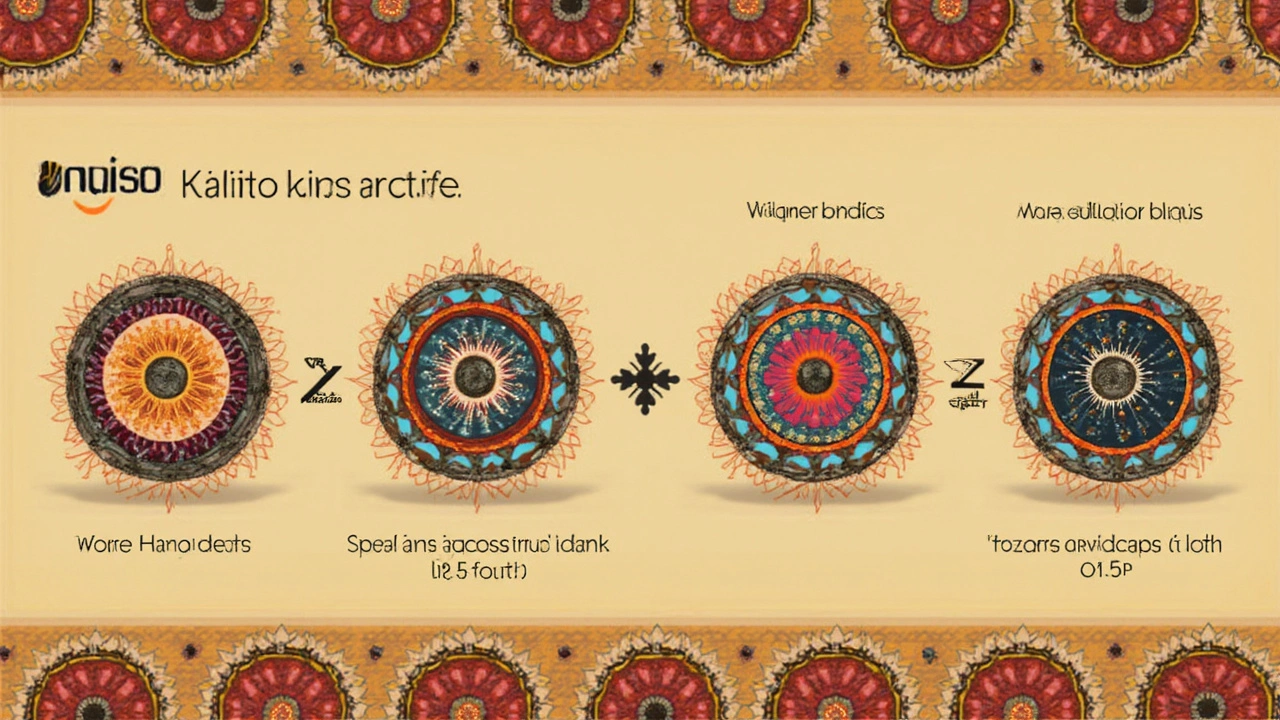 Mar, 28 2025
Mar, 28 2025
If you've ever found yourself wondering how long those shiny new brake pads will last, you're definitely not alone. It's one of those things car owners need to know—like a sixth sense for your vehicle. Typically, new brake pads last somewhere between 30,000 and 70,000 miles. But, that’s quite a range, right? So, why the difference?
One big reason is the type of brake pads you choose. Ceramic, organic, or metallic pads all have different lifespans. Ceramic tends to be the go-to for a smooth and quieter ride, but they can be a tad more expensive. On the other hand, metallic pads are tough and cheaper but may wear your rotors faster.
Your driving habits are also a huge wild card. If you’re heavy on the brake and have a lot of stop-and-go in your daily drive, expect a quicker wear. Plus, whether you’re zooming down highways or creeping through city streets plays a part too.
- Understanding Brake Pad Lifespan
- Factors That Affect Wear
- Signs It’s Time to Replace
- Tips to Extend Brake Pad Life
Understanding Brake Pad Lifespan
So, how do we pin down the lifespan of those trusty brake pads? It's a mix of materials and wear patterns. Typically, brake pads will need replacing after about 30,000 to 70,000 miles, but why such a wide range? Let's break it down.
Ceramic, organic, and semi-metallic pads—the usual suspects—each come with their own timelines. Ceramic brake pads are quiet and long-lasting but are more suitable for regular driving. Meanwhile, semi-metallic pads offer better performance at high speeds or towing heavy loads, but they might wear out quicker and be a tad noisier.
Interestingly, an expert from Car Talk once noted, "
Most pads start squealing when they're nearing the end of their life, not something you want to ignore."
- Car Talk Expert
- Driving habits: Fast acceleration and hard braking can shred brake pads quicker than you think.
- Terrain: Frequent driving through hills or mountains? Expect those pads to wear faster.
- Weather: Moist, gritty conditions might wear the pads differently than dry, clear climates.
Some car models feature brake life indicators, making it easier to keep tabs without guesswork. Regular check-ups—every oil change or so—can give insight into how much life is left in your brake pads.
To give a clearer picture, here's how different types could measure up:
| Brake Pad Type | Average Lifespan |
|---|---|
| Ceramic | 50,000 - 70,000 miles |
| Semi-Metallic | 30,000 - 50,000 miles |
| Organic | 20,000 - 40,000 miles |
Knowing this, it’s clear that beyond just replacing when things sound and feel off, a detailed understanding can save time, money, and ensure safety on the road. So, keep an eye (and ear) out, and you’ll thank yourself later!
Factors That Affect Wear
Brake pads are a vital part of your car, and their lifespan can be influenced by several key factors.
Driving Habits: First off, how you drive makes a huge difference. Quick stops and fast accelerations can wear down brake pads faster. Think about it—every time you slam on those brakes, it's putting extra pressure on them. If you're a city driver dealing with traffic lights and stop-and-go traffic all day, expect to get a bit less mileage compared to someone who drives mostly on highways.
Brake Pad Material: The type of material your brake pads are made from also plays a role. Here’s a quick breakdown:
- Ceramic Pads: Great for a quiet ride and long-lasting but can be pricier.
- Metallic Pads: Less expensive and durable but can cause more wear on the rotors and can be noisier.
- Organic Pads: Usually cheaper and quieter but wear out faster than the other types.
Vehicle Type: Bigger, heavier vehicles might chew through brake pads more quickly than smaller, lighter cars simply because they require more effort to stop.
Environment: Believe it or not, where you drive can affect brake pad lifespan too. Hilly terrains or mountainous areas that require constant braking can cause pads to wear faster.
Here's a quick look at how these factors interact:
| Factor | Impact on Wear |
|---|---|
| Heavy braking | Increases wear |
| City driving | Increases wear |
| Ceramic pads | Decreases wear but may cost more |
| Heavier vehicle | Increases wear |
| Hilly terrain | Increases wear |
All these aspects add up, helping determine how long your brake pads really last. Becoming mindful of these can not only save you money but also help you maintain your vehicle well. Pay attention to the signs and adjust your driving habits where possible. Keeping these factors in check could lead to longer-lasting brake pads, and a safer ride.

Signs It’s Time to Replace
Wondering if your brake pads are reaching the end of their road? There are a few telltale signs to watch out for, ensuring your vehicle's safety isn’t compromised.
First off, listen up. If you hear a squealing or screeching noise every time you press the brake pedal, that’s a big red flag. Most brake pads have a built-in indicator that creates this sound to alert you. If ignored, that sound can turn into a grinding noise, which means the pads are completely worn down, and the metal of the calipers is damaging your rotors.
Another indication might be visible wear. Take a good look through the wheel spokes and you should be able to spot at least a quarter inch of pad. If there’s less than that, it’s time for a replacement.
Don't forget about the brake pedal feel. If you notice it’s getting softer or spongy, it might mean your brake pads need attention. You should also be wary if the car pulls to one side while braking—it can signal uneven wear.
- Consistent squealing or screeching noise when braking
- Grinding sounds indicating metal-on-metal contact
- Brake pedal feels soft or spongy
- Vehicle pulls to one side during braking
A final pro tip: look out for warning lights on your dashboard. If the brake warning light (a circle with an exclamation mark inside) lights up, it could be a signal from your vehicle’s brake wear sensors.
Keeping an eye out for these signs will help you know when it’s time to change your brake pads, keeping your vehicle safe and sound on the road.
Tips to Extend Brake Pad Life
So, you're looking to make those brake pads go the extra mile? Good call, because keeping them in top shape means less frequent replacements and better vehicle safety. Here’s a breakdown of some handy tips.
First up, watch your speed. Stopping from higher speeds wears the pads quicker since the brakes need to work harder to slow you down. Just driving a little slower can really save some wear and tear.
Next is coasting when you can. If you see a red light ahead, just ease off the gas and let the car naturally slow down instead of racing up and then braking hard. It’s easier on the brake pads and helps with fuel efficiency too.
It’s not just how you drive but what you’re carrying. The heavier your car, the more pressure on the brakes. Got junk in your trunk? Time to lighten the load.
And don't forget regular check-ups. Part of keeping your brake pads in shape is checking other parts of the braking system, like the rotors. Worn-out rotors can ruin new brake pads pretty fast, so it’s a good idea to get them inspected whenever you’re getting an oil change.
- Keep an eye (and ear) out for squealing or grinding noises.
- Replace brake fluid as needed. Clean fluid helps with smoother braking.
- Install high-quality pads. Sometimes, spending a bit more at the start saves you a lot in the long run.
In fact, if you’re curious about how much you save by extending the lifespan, here’s a quick peek:
| Pad Type | Average Lifespan (Miles) | Cost Per Replacement |
|---|---|---|
| Ceramic | 60,000 | $150 |
| Metallic | 45,000 | $100 |
| Organic | 35,000 | $75 |
Following these tips, you’ll likely notice your brake pads hanging in there a lot longer, saving you some cash and keeping your ride smooth and safe.